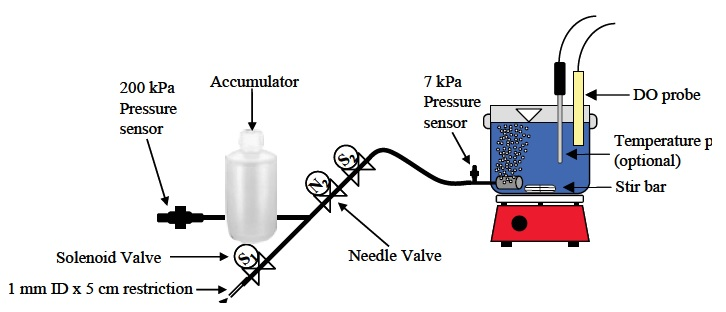Laboratory Research in Environmental Engineering¶
Laboratory Manual¶
© Cornell University 2019
Educational institutions may use this text freely if the title/author page is included. We request that instructors who use this text notify one of the authors so that the dissemination of the manual can be documented and to ensure receipt of future editions of this manual.
Preface¶
Continued leadership in environmental protection requires efficient transfer of innovative environmental technologies to the next generation of engineers. Responding to this challenge, the Cornell Environmental Engineering faculty redesigned the undergraduate environmental engineering curriculum and created a new senior-level laboratory course. This laboratory manual is one of the products of the course development. Our goal is to disseminate this information to help expose undergraduates at Cornell and at other institutions to current environmental engineering problems and innovative solutions.
A major goal of the undergraduate laboratory course is to develop an atmosphere where student understanding will emerge for the physical, chemical, and biological processes that control material fate and transport in environmental and engineered systems. Student interest is piqued by laboratory exercises that present modern environmental problems to investigate and solve.
The experiments were designed to encourage the process of “learning around the edges.” The manifest purpose of an experiment may be a current environmental problem, but it is expected that students will become familiar with analytical methods in the course of the laboratory experiment (without transforming the laboratory into an exercise in analytical techniques). It is our goal that students employ the theoretical principles that underpin the environmental field in analysis of their observations without transforming the laboratories into exercises in process theory. As a result, students can experience the excitement of addressing a current problem while coincidentally becoming cognizant of relevant physical, chemical, and biological principles.
At Cornell, student teams of two or three carry out the exercises, maximizing the opportunity for a hands-on experience. Each team is equipped with modern instrumentation as well as experimental reactor apparatus designed to facilitate the study of each topic. Computerized data acquisition, instrument control, and process control are used extensively to make it easier for students to learn how to use new instruments and to eliminate the drudgery of manual data acquisition. Software was developed at Cornell to use computers as virtual instruments that interface with gas chromatographs (HP 5890A), UV-Vis Spectrophotometers (HP 8452) as well as a variety of sensors.
The development of this manual and the accompanying course would not have been possible without funds from the National Science Foundation, the DeFrees Family Foundation, the Procter and Gamble Fund, the School of Civil and Environmental Engineering and the College of Engineering at Cornell University.
Monroe L. Weber-Shirk
Ithaca, NY
